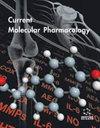筛选和鉴定肝细胞癌中淫羊藿苷的靶点 ESR1:文献计量学和生物信息学分析的证据
IF 2.9
4区 生物学
Q3 BIOCHEMISTRY & MOLECULAR BIOLOGY
引用次数: 0
摘要
背景:2022 年,具有雌激素样活性的中药伊卡丽汀因其临床安全性和有效性被 CSCO 指南推荐为晚期 HCC 患者的系统治疗药物。然而,伊卡丽汀的作用机制和靶点尚不清楚。本研究旨在揭示伊卡丽汀在 HCC 中的作用靶点:首先从科学网(Web of Science)下载与伊卡立汀相关的文献。使用 "Rstudio"、"VOSviewer "和 "Mendeley Desktop "等软件分析冰蒜素的文献分布和研究热点。同时,通过与 PubChem 数据库结合,获得了与冰片黄素相关的基因。HCC患者的第二个转录组数据来自TCGA数据库。利用String数据平台对icaritin相关基因进行蛋白相互作用(PPI)分析,并利用Cytoscape进行可视化和网络拓扑分析。结合Cox回归分析筛选出枢纽靶点,并通过细胞实验进行验证。结果共获得239篇与icaritin相关的文章 HCC是icaritin领域的一个新热点。共获得 292 个冰醋酸相关基因,并通过模块划分获得了包含 34 个基因的核心模块。其中ESR1是一个独立的预后因子。分子对接显示,ESR1与冰片素具有很高的亲和力。功能研究发现,ESR1能抑制HCC细胞的恶性增殖,并能提高HCC细胞对伊卡利丁的敏感性。结论我们认为,ESR1作为伊卡利丁的靶点可能有利于改善伊卡利丁的治疗效果。本文章由计算机程序翻译,如有差异,请以英文原文为准。
Screening and Identification of ESR1 as a Target of Icaritin in Hepatocellular Carcinoma: Evidence from Bibliometrics and Bioinformatic Analysis
Background: In 2022, icaritin a Traditional Chinese Medicine with estrogen-like activities was recommended by the CSCO guidelines as a systematic treatment for patients with advanced HCC due to its clinical safety and efficacy. However the mechanism and targets of icaritin are unclear. In this study we aimed to reveal the target of icaritin in HCC Methods: First literature related to icaritin was downloaded from the Web of Science. The software programs “Rstudio” “VOSviewer” and “Mendeley Desktop” were used to analyze the distribution of icaritin publications and research hotspots. Meanwhile icaritin-related genes were obtained by combining them with the PubChem database. Second transcriptome data of HCC patients were obtained from the TCGA database. The proteinprotein interaction (PPI) analysis of icaritin-related genes was performed using the String data platform and the visualization and network topology analysis were performed using Cytoscape. Cox regression analyses were combined to screen the hub target and verified it through cell experiments. Results: A total of 239 icaritin-related articles were obtained HCC is a new hotspot in the icaritin field. 292 icaritin-related genes were obtained and a core module containing 34 genes was obtained by module division. Among them ESR1 was an independent prognostic factor. Molecular docking showed that ESR1 and icaritin had a high affinity. Functional studies revealed that ESR1 inhibits HCC cell malignant proliferation and improves the sensitivity of HCC cells to icaritin. Conclusion: We propose that ESR1 as a target of icaritin may be conducive to improving icaritin therapy.
求助全文
通过发布文献求助,成功后即可免费获取论文全文。
去求助
来源期刊

Current molecular pharmacology
Pharmacology, Toxicology and Pharmaceutics-Drug Discovery
CiteScore
4.90
自引率
3.70%
发文量
112
期刊介绍:
Current Molecular Pharmacology aims to publish the latest developments in cellular and molecular pharmacology with a major emphasis on the mechanism of action of novel drugs under development, innovative pharmacological technologies, cell signaling, transduction pathway analysis, genomics, proteomics, and metabonomics applications to drug action. An additional focus will be the way in which normal biological function is illuminated by knowledge of the action of drugs at the cellular and molecular level. The journal publishes full-length/mini reviews, original research articles and thematic issues on molecular pharmacology.
Current Molecular Pharmacology is an essential journal for every scientist who is involved in drug design and discovery, target identification, target validation, preclinical and clinical development of drugs therapeutically useful in human disease.
 求助内容:
求助内容: 应助结果提醒方式:
应助结果提醒方式:


